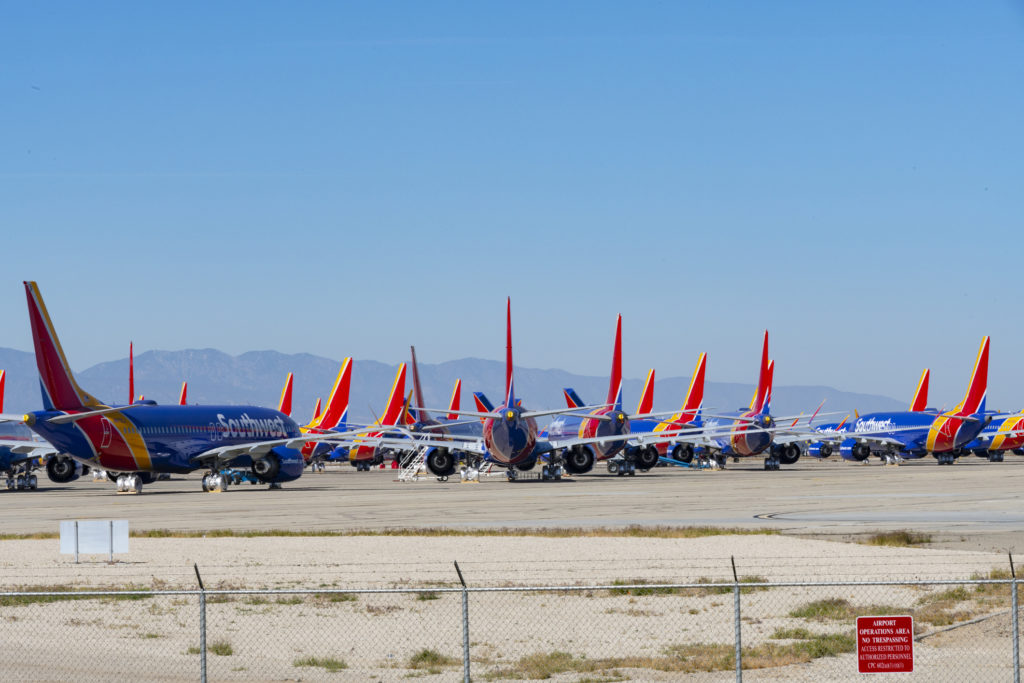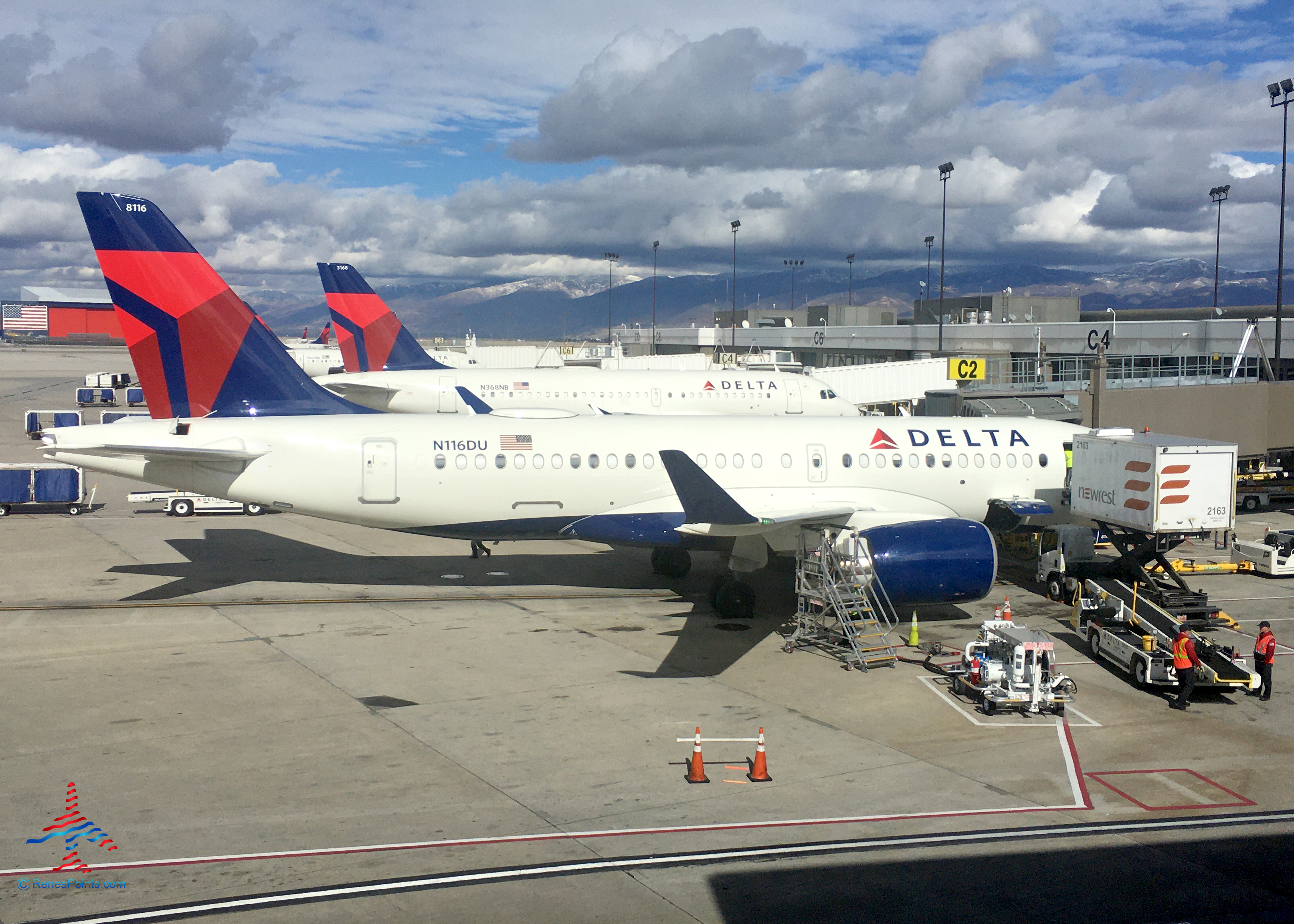Advertiser Disclosure: Eye of the Flyer, a division of Chatterbox Entertainment, Inc., is part of an affiliate sales network and receives compensation for sending traffic to partner sites, such as CreditCards.com. Some or all of the card offers that appear on the website are from advertisers. Compensation may impact how and where card products appear on the site. This site does not include all card companies or all available card offers. Opinions, reviews, analyses & recommendations are the author’s alone, and have not been reviewed, endorsed, or approved by any of these entities. Some of the links on this page are affiliate or referral links. We may receive a commission or referral bonus for purchases or successful applications made during shopping sessions or signups initiated from clicking those links.
The highly anticipated and well-reviewed Airbus A220 (formerly the CS100) is in the news again.
But not for great reasons or it’s controversial first class seats.
It seems there are some serious concerns about the plane’s engines and software.
What does this mean for Delta passengers?
A220: Having Problems for a While?
We’ve been keeping an eye on various forums and threads where people detail their love and concern for the A220.
This instance stood out: FlyerTalk member wlau’s twelfth A220 ride was the first without a delay.
“The amount of broken things that require service is ridiculous,” wlau added. “All my delays were mechanical. Plus, the IFE’s USB port is broken, audio jack is not working… There are quite a few quality issues.”
Wlau notes that the engines sometimes produce a “loud, orca mating sound.” (Forget the trip to SeaWorld — just bring the kids onto an A220?)
🔎 Serious incident @Airbus #A220 HB-JCM @flyswiss from 25/07/19 / 3 fragments from the engine have been found by the @BEA_Aero / @IGNFrance / volunteer team. The search zone defined by @BEA_Aero and @NTSB_Newsroom is confirmed. Thanks to all participants of this first day. pic.twitter.com/cqlBbDmjxv
— BEA ✈️ 🚁🛩 🇫🇷 (@BEA_Aero) November 6, 2019
In a more high profile incident, SWISS grounded its entire A220 fleet a few weeks ago, following multiple incidents involving engine problems (i.e. pieces falling from the sky).
“In July, one of the aircraft diverted to Paris after flames were reportedly observed originating from the engine,” Simple Flying’s Tom Boon writes. “The French BEA asked the public for help to find parts that may have fallen from the aircraft at the time.”
Lovely.
Turns out, a software issue appeared the likely culprit. (Does this sound familiar? The Boeing 737 MAX has had software issues, too.)
Soon, though, SWISS cleared their A220s to fly again and they are still flying them today.

“Airbus and Pratt & Whitney have told (A220) pilots not to push engines above 95% of their maximum thrust when flying above 29,000 feet – a demanding configuration currently only required by Swiss,” Reuters’ Tim Hepher writes. (Side note: “The larger and more widely used A320 partly relies on the same family of Pratt engines but the version used for those jets is not affected by the software review.”)
Bloomberg’s Mary Schlangenstein and Siddharth Vikram Philip report Transport Canada issued a statement that A220s should only be flown at 94% of full power above 29,000 feet and must stay below 35,000 feet during icing conditions — because using the de-icer could cause the engine to overheat.
But how often do planes truly need more than 94% thrust at altitude? (Though it seems it might be standard practice for SWISS) They don’t use 100% even during takeoff. I’m not saying it never happens — and it’s certainly not good that the engines shouldn’t be pushed up to 100%. But how likely is it that 100% thrust will even be needed?
Maybe this is comparing oranges to apples — but how often do you floor the gas pedal in your car? Even though you can, you rarely if ever do or have the need (I hope).
Engines possibly overheating because of de-icer issues certainly isn’t encouraging. But at least these issues have been identified and can hopefully be avoided and prevented.
An A320 pilot flying for a major airline told a mutual colleague he refers to his rig as the “Scare-bus.” Hopefully, that’s just an employee participating in the time-honored tradition of work-related snarky wordplay.
What Does Delta Say?
Delta told Inc.’s Chris Matyszczyk:
“We are determining what additional actions might be needed, but Delta has operated our A220 fleet below the engine thrust amounts described in the directive from the FAA. We will continue to do so.
As safety is always our top priority for our customers and employees, Delta will meet or exceed directed actions from regulators and manufacturers. There was an additional directive from the FAA that was issued in late September about PW1500G engines that power the A220. We’re compliant with that directive as safety is always our top priority.”
Pilots on an industry message board, though, don’t seem overly concerned. One noted that SWISS generally runs its A220 engines at about 20% more thrust than Delta does with theirs. Others praised the A220 as easy to fly.
Should We Still Fly Delta’s A220s?
Multiple mechanical delays like the ones wlau experienced are frustrating, especially on a new aircraft. That, I think, is unacceptable. New, jazzy, high tech planes shouldn’t be experiencing these issues. These are apparently “teething problems,” a term linked to the A220 in several posts and reviews and other write-ups.
Big pacifiers and teething rings must be fetched el pronto.
Frankly, I think aircraft manufacturers, airlines, and pilots are being extra proactive when it comes to safety, especially in light of the 737 MAX tragedies and Boeing’s ongoing saga.
The 737 MAX and A220 situations aren’t in the same league. Heck, they’re not even in the same sport.
Delta pilots aren’t going to fly planes they don’t feel are safe. But if they’re on the A220, so am I. You?
–Chris
Advertiser Disclosure: Eye of the Flyer, a division of Chatterbox Entertainment, Inc., is part of an affiliate sales network and receives compensation for sending traffic to partner sites, such as CreditCards.com. Some or all of the card offers that appear on the website are from advertisers. Compensation may impact how and where card products appear on the site. This site does not include all card companies or all available card offers. Opinions, reviews, analyses & recommendations are the author’s alone, and have not been reviewed, endorsed, or approved by any of these entities. Some of the links on this page are affiliate or referral links. We may receive a commission or referral bonus for purchases or successful applications made during shopping sessions or signups initiated from clicking those links.
Responses are not provided or commissioned by the bank advertiser. Responses have not been reviewed, approved or otherwise endorsed by the bank advertiser. It is not the bank advertiser's responsibility to ensure all posts and/or questions are answered.












You’re comparing apples to oranges.
It’s one thing for a new airplane design to have issues (in this case the engine is not even Bombardier/Airbus fault), and it’s another for a corporation to deliberately falsify data/results.
@FLL Flyer – Bombardier/Airbus chose the engine manufacture and installed them on the A220. Personally I never want to see any bits fall off or out of a jet engine. You?
Is US Boeing paying you to smear European Airbus?
@DutchGuy – Neither Chris, who wrote the post, nor me René, are paid by Boeing. As to smear… the facts are the facts as stated in the post.
@DutchGuy: You read the part where I said I was comfortable flying the A220, right?
Not related to this post, but all things Delta. They sent me an email yesterday for $1399 to get gold status. Well I just hit the $30k spend on my reserve card, and with upcoming travel, this will get me to Platinum. If I wait, Delta will raise the price and offer me platinum. Would you say this is a good deal. I feel limited time to act. Thanks!
@Marlene: Check out this post René just wrote, which includes some better options to consider.
Mating sounds of whales, indeed! I wish I could take credit for coining that phrase. When I flew this bird on Delta DTW-DFW 3 months ago, I had a similar reaction to the hydraulic gearing of the engines. I’m no physicist but know enough about engine design to realize that this hydraulic gearing activity is part of what yields fuel savings, which is good for everyone save OPEC. The din is most distracting, though.
Bring back the venerable DC-9!
“Delta pilots aren’t going to fly planes they don’t feel are safe”
Well … 2/2 (small sample size, I know) of the 737 pilots I know told me they’d feel comfortable flying a Max today (not literally today, they said it several weeks ago), so ?????
Cruise uses a higher power setting than you might think. The percentage ratings are typically for the maximum rated RPMs of the N1 (low pressure) spool or of the N2 (high pressure) spool. A given spool RPM rate will produce (much) less actual thrust at altitude than at sea level, due to the thinner air (somewhere on the order of a third to a quarter, depending on altitude and atmospheric conditions.)
Of course, the thinner air also means that the aircraft will encounter less drag for a given airspeed, so less thrust is required at high altitudes.